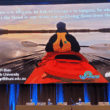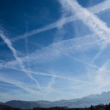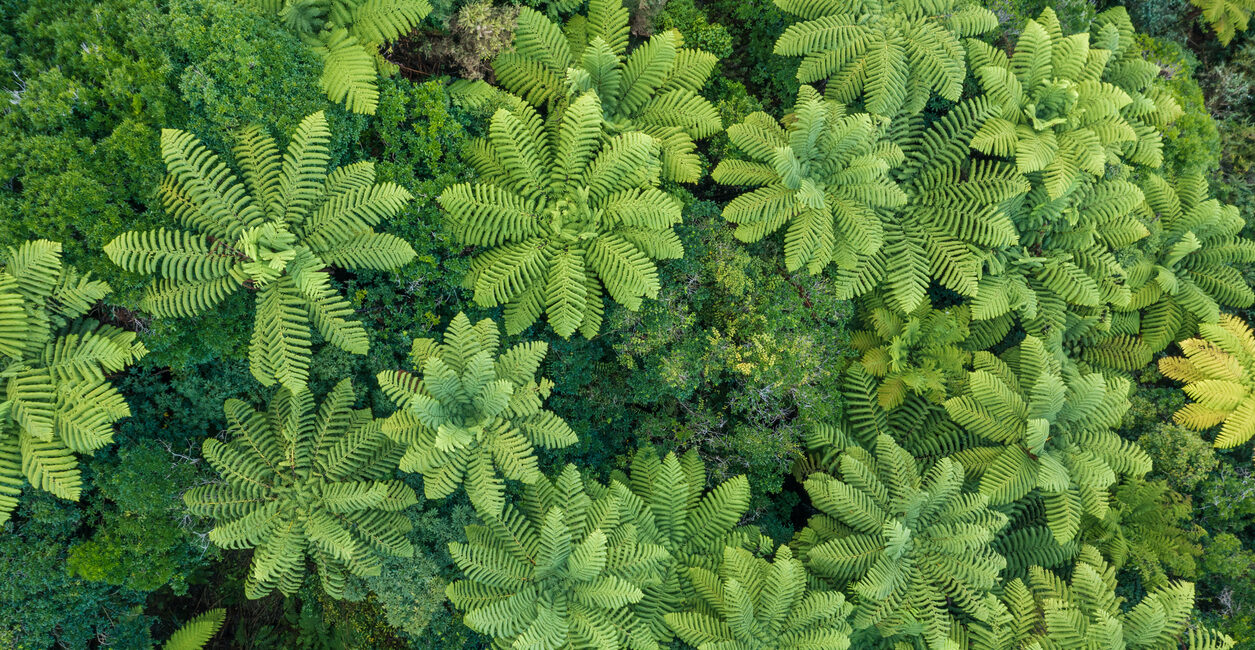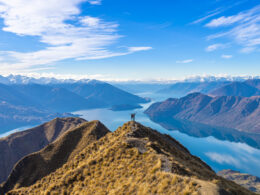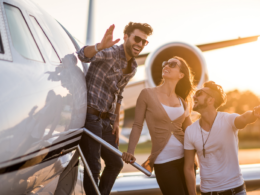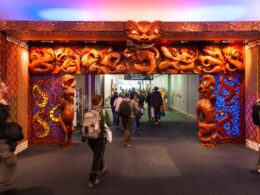In the fourth episode of Checking In, I consider regenerative tourism. Lots has been spoken and written about the so-called tourism reset after COVID19 and the emergence of the concept of regenerative tourism. But what is regenerative tourism and what makes it any different from the tourism that we have now? Is it little more than fanciful thinking or does it have real potential to allow us to rethink the relationship between tourism, people and place?
TRANSCRIPT
I suppose the starting point for this conversation was December 2019 when Simon Upton, the Parliamentary Commissioner for the Environment, released his first tourism report titled “Pristine, Popular… Imperilled?”
This report focused on the environmental consequences of sustained high tourism growth during the 2010s and projected continuing tourism growth. Of course, this was prior to COVID19. In fact, it was right on the eve of the outbreak of the COVID -19 pandemic. This report summarized very nicely the point that we’d arrived at immediately prior to the pandemic. According to Simon Upton, ‘old tourism’ was ‘imperilled’ because it was locked in a capitalist volume growth paradigm. And the pandemic had revealed beyond any doubt that tourism really needed to radically change if it was to survive in the 21st century.
In his report, the commissioner commented that “the persistent growth of tourism in recent decades has resulted in steadily increasing pressure on people and places. The large increases in visitor numbers to some areas of high natural amenity had contributed to the loss of tranquility, sense of wilderness, and cultural heritage that made these sites special in the first place. It had also compromised the ability to exercise kaitiakitanga. The development of infrastructure required to accommodate visitor growth, roads, car parks, hotels, toilet blocks, and airports had led to an incremental but cumulatively significant modification of the natural landscape”.
So what is the regenerative tourism paradigm that we need if tourism is to survive and thrive in the 21st century?
Well, according to Simon Upton, we need to move away from extractive and depletive ‘old tourism’, in which nature is produced and consumed according to capitalist principles; where profit is extracted from selling experiences of nature, such as putting humans into direct contact with wild animal populations, where nature is exploited, controlled and managed. We need to change our thinking in terms of our relationship with nature through tourism.
In the 1990s, we saw the emergence of the idea of sustainable tourism. Sustainable tourism offers a positive contribution in its focus on raising awareness about sustainability issues arising through tourism development. So sustainable tourism draws attention to how we can limit harm through minimizing use of resources, through reusing and recycling. And I suppose sustainable tourism began to move us in the general direction of a circular economy as we might now think about it today.
The problem is, sustainable tourism remains anchored in the ‘old tourism’ paradigm. It doesn’t actually address some of the issues of sustained high growth and some of the wider non-local issues of tourism, such as climate change.
In more recent years, some tourism businesses have embedded what we might call a ‘restorative tourism’ approach. These are businesses that are committed to repairing damage and restoring ecologies through contributing to conservation. They’re also businesses that are really committed to educating visitors and to conservation advocacy. This has been a really credit-worthy development, and it hints at a new alternative tourism paradigm that’s perhaps now coming increasingly into focus.
I remember some years ago, Real Journeys and their “Cruise for a Cause” campaign where visitors could experience Fiordland in ways that assisted Forest and Bird with predator control, for example. And also other things like helping to train Southland and Otago Cancer Society volunteers. I mean, these are awesome tourism business initiatives.
I would argue that ‘regenerative tourism’ is the next step in this evolution. This is an emerging paradigm that aspires to functional self-renewal inspired and informed by Te Ao Māori and Mātauranga Māori. So regenerative tourism serves as a platform to understand ecological systems based on local indigenous knowledge and perhaps as a platform that allows kaitiakitanga and manaakitanga to be fully expressed.
Regenerative tourism is based on the adoption of long-term intergenerational perspectives that see humans as part of, as opposed to separate from, nature. And that is a really important point that I’ll come back to.
The idea of regenerative tourism is basically founded on the four capitals framework. So the idea here is that regenerative tourism can help to contribute to building environmental capital, but also social, economic and cultural capital.
So how will regenerative tourism help to build natural capital? Well, ideally, and this is a huge challenge, of course it is, but ideally regenerative tourism will be based on a commitment to net zero carbon, and it will seek to engage visitors in the restoration of nature and biodiversity. Ideally, regenerative tourism would be integrated with Predator Free 2050. So a commitment to protecting nature, enhancing nature in our terrestrial and marine environments, preserving wilderness and natural quiet.
Regenerative tourism will also build social capital by empowering and enriching local communities and by seeking to provide health and wellbeing benefits for local communities. It will not exploit cheap labour, but it will provide quality employment and pay the living wage. Ideally, it’ll support local suppliers and support local jobs, local heritage and diverse communities in ways that are inclusive and just. And it’ll be integrated with local civil defence to build community resilience.
Regenerative tourism will ideally build economic capital by providing local employment opportunities and enhancing the local economy with local ownership and low levels of economic leakage, which has always been a problem in tourism.
We should not ignore the economic importance of domestic tourism as we have in the past. If we’re to build resilient regional economies, we need to make sure that we’re resilient to global crises such as the pandemic and domestic tourism we now know is absolutely critical to this.
And regenerative tourism will build cultural capital. It’ll connect visitors to place and stimulate new ways of thinking in the delivery of authentic experiences as determined by Mana Whenua.
There are some amazing and world-leading examples of tourism businesses in New Zealand that are informed by these sorts of principles. Ngāi Tahu tourism was a leader in committing to the living wage and has also committed to electrifying key aspects of its businesses.
One of my favourites is Kapiti Island Nature Tours, an absolute exemplar of tourism and ecological restoration built upon principles such as kaitiakitanga and manaakitanga, where visitors gain rare insights into an absolutely stunning conservation success story.
A local favourite of mine, is the Korora Blue Penguin Colony at Takiharuru Pilots Beach on the Otago Peninsula. And this example is really informative. For many years, Pilots Beach was open to public access 24/7, unlimited access to the beach. Behind the dune, six or eight or 10 pairs of blue penguins nested in a population that was barely viable due to predation and human disturbance. And in fact, occasional vehicle strikes at night when cars could access the beach right up to the dune when penguins were coming ashore at the end of the day. In 2008, the Kuraako Karatai Trust and the Otago Peninsula Trust agreed to establish a joint venture accord to manage the environmental, historical, and amenity values of Takiharuru Pilots Beach. The Pukekura Penguins Initiative was formed.
And this in the intervening years has completely transformed this population through a commitment to species conservation and wider ecological restoration. Believe it or not, now 200-300 penguins can be viewed each evening in a carefully managed, guided and interpreted experience at a site where penguins and other wildlife are fully protected. This initiative has been supported by a science programme studying the blue penguin population. And that science programme has been fully funded by visitors themselves.
I’ve often thought how amazing it would be if this sort of model could also be applied to Hoiho – the Yellow-eyed Penguin. I was so pleased to see Hoiho voted as bird of the year. And I’d love to see a form of tourism that could contribute meaningfully and help to reverse the population decline of Hoiho on the Otago Peninsula.
So clearly, some tourism businesses and trusts in New Zealand have emerged as exemplars of regenerative tourism, providing examples not only in New Zealand but globally to how this model and new paradigm might work.
We now see regenerative tourism principles embedded in many destination management plans in New Zealand. Queenstown’s destination management plan ‘Travel to a Thriving Future’ is pretty much completely embedded in the principles of regenerative tourism and zero carbon tourism. And key agencies with relevance to tourism, such as Department of Conservation, are also moving in these general directions and considering regenerative principles in their tourism and recreation consenting and concession processes.
I would argue that regenerative tourism is particularly relevant in Australia and New Zealand where so much can be learned from indigenous thinking and where we can achieve and actively shape the sorts of experiences of nature and culture that we want to share with international visitors.
I would also argue that this will require us to continue to rethink our relationship with nature. Instead of seeing nature as a limitless resource for tourism experiences in the present, we might see the opportunities for tourism to help to restore nature now and in perpetuity. This raises lots of questions about the relationship between nature and tourism. The concept of wilderness and the environmental thinking that underpins National Parks policy are embedded in western environmental philosophy, in which the separation of humans from nature is assumed.
But this actually stands in stark contrast to the concept of Whenua as informed by Mātauranga Māori, in which humans and nature are actually inseparable. That raises lots of questions about the culture of nature, but that’s a topic for another podcast.
